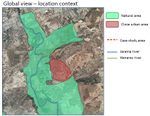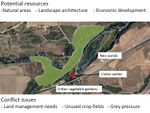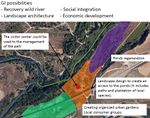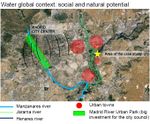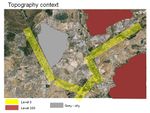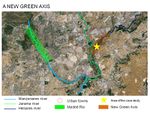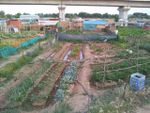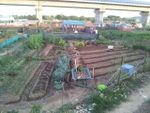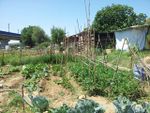Green Infrastructure 2014 Group H - Case Study 4
---> back to group page working group H
please add your title here
| Name | Henares river area | |
| Country | Spain | |
| City | Madrid | |
| Authors | Anna Martínez | |

| ||
|
| ||
Rationale: Why is this case interesting?
The Green Infrastructure potential of this case resides on the components around the area. The nature part is the river itself, the fauna and flora related with the river contributes the potential of this factor. In the other hand it is the engineering potential, a study of the recovery of the river course is required because some places are flooded. The location of the place is near a urban area so it elevates the social potential and it increases the possibilities of activity. The area annexed to the riverside were fields for years, now the owners have abandoned the land farming, but the irrigation and plots remain, and this is the economic potential of the case.
Author's perspective
My agricultural engineering view makes me find the benefit of the crops around the river. At present some plots are rented for the agricultural activity, but it's not organized and it doesn't create development opportunities. Also the environmental study and landscape architecture point of view helps to make the combination between the rivers recovery and the social integration.
Landscape and/or urban context of your case
Some context has already been written, but in detail I would like to highlight the following points:
- History, cultural and social features: in the fields of the area, the bad working of the irrigation generates natural ponds. Also, is has generated a social movement to cultivate small plots of land.
- Biogeography: belongs to a legally protected area. Regional park around the axes of the lower courses of the Manzanares and Jarama rivers.
- Illustrations
Analytical drawings
- Conflicts and potentials of the Henares river area
- Analytical Drawings
Green Infrastructure benefits for this site
- Reducing water losses
- Increase the quality of the natural environment (water, fishes, plants, etc...)
- Landscape improvement
- Benefits the local community (increase life quality)
- New economic business (eco-market)
Potential for multifunctionality
- The social potential comes from the transformation of abandoned plots in a cooperative of urban gardens that remain used by the neighbors to feed themselves and having the possibility to create an economic benefit. The environmental potential comes from the natural protected area, regenerates the river side area could bring new habitats for animals and plants. The potential of the landscape is determined by converting the east of Madrid in a new green axis for the city.
Projective drawings
- How would you like this case to change in the near future? (in 1-2 years)
- In the near future the first step is to organize urban gardens to establish order and higher profit and better use of resources.
- And how could it look like in 10-15 years?
- In the long term it will become a new green axis of the city of Madrid, currently there is one in the southwest area of the city called "Madrid Rio".
- Projective Drawings
Summary and conclusion
- The set of actions in the case study are based on reviving a natural area, abandoned by the municipal authorities and wasted for citizens. The river Henares has a legal protection but hasn't a management plan by the government, this causes a continuous degradation to the river environment. In farming plots neglected close to the area of action were rented pieces of land where a few people work the land. The project is based on resolve these three issues: the area of natural protection, the alternative crops and the lack of management.
Image Gallery
Please add further images/photos here
- Image Gallery
References
- please add your references here
About categories: You can add more categories with this tag: "", add your categories
